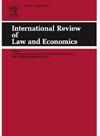Liability law, Defensive medicine and Healthcare quality
IF 1
3区 社会学
Q3 ECONOMICS
引用次数: 0
Abstract
This paper develops a liability model that incorporates both patient heterogeneity and demand for healthcare services. After choosing the quality level of care, healthcare providers use diagnostic information to decide whether to treat patients based on their individual risk profiles. This information determines both the expected treatment costs and the potential compensation in case of a medical accident. We show that under strict liability, a fixed prospective payment can discourage providers from treating most high-risk patients — a phenomenon known as negative defensive medicine — and can lead to under-investment in care quality for those who are treated. Under a negligence rule, high-risk patients may also be denied care, but to a lesser extent. However, the negligence rule may incentivize providers to over-invest in care quality. This inefficiency can be partially mitigated by adjusting the prospective payment level, allowing the negligence rule to better align providers’ incentives with the socially efficient level of care.
责任法,防御性医疗和医疗质量
本文建立了一个包含患者异质性和医疗保健服务需求的责任模型。在选择了护理的质量水平后,医疗保健提供者使用诊断信息来决定是否根据患者的个人风险概况对其进行治疗。这些信息既决定了预期的治疗费用,也决定了发生医疗事故时的潜在赔偿。我们表明,在严格责任下,固定的预期付款可能会阻止提供者治疗大多数高风险患者——一种被称为消极防御医学的现象——并可能导致对接受治疗的患者的护理质量投资不足。根据过失规则,高风险患者也可能被拒绝治疗,但程度较轻。然而,过失规则可能会激励提供者在护理质量上过度投资。这种低效率可以通过调整预期支付水平来部分缓解,允许疏忽规则更好地将提供者的激励与社会有效的护理水平结合起来。
本文章由计算机程序翻译,如有差异,请以英文原文为准。
求助全文
约1分钟内获得全文
求助全文
来源期刊
CiteScore
2.60
自引率
18.20%
发文量
38
审稿时长
48 days
期刊介绍:
The International Review of Law and Economics provides a forum for interdisciplinary research at the interface of law and economics. IRLE is international in scope and audience and particularly welcomes both theoretical and empirical papers on comparative law and economics, globalization and legal harmonization, and the endogenous emergence of legal institutions, in addition to more traditional legal topics.

 求助内容:
求助内容: 应助结果提醒方式:
应助结果提醒方式:


